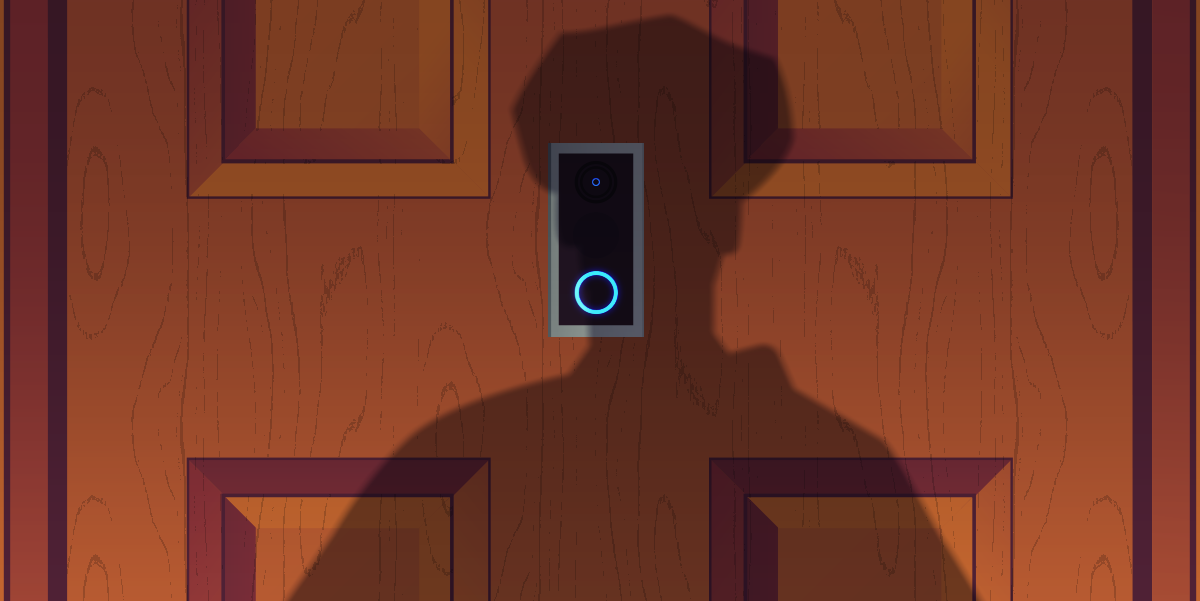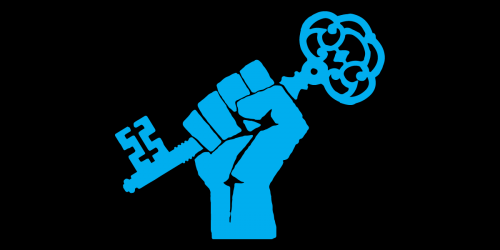Ring, Amazon’s “smart” doorbell camera company, recently began sharing statistics on how many video requests police departments submit to users, and the numbers are staggering. In the first quarter of 2020 alone, police requested videos over 5000 times, using their partnerships with the company to email users directly and ask them to share private videos from their Ring devices.
It’s unclear how many video requests were successful, as users have the option to deny the requests; however, even a small percentage of successful requests would mean potentially thousands of videos shared with police per year. With a warrant, police could also circumvent the device’s owner and get footage straight from Amazon, even if the owner denied the police.
TELL RING TO END ITS POLICE PARTNERSHIPS
But this isn’t the only disturbing number: roughly half of the agencies that now partner with Ring also have been responsible for at least one fatal encounter in the last five years, an analysis of data from Ring, Fatal Encounters, and Mapping Police Violence shows. In fact, those agencies have been responsible for over a third of fatal police encounters nationwide. 1
If Amazon is truly concerned about “systemic racism and injustice,” it must immediately recognize the danger of building a digital porch-to-police pipeline
Concerns about police violence must be tied to concerns about growing police surveillance and the lack of accountability that comes with it. Ring partnerships facilitate police access to video and audio footage from massive numbers of doorbell cameras aimed at public spaces such as sidewalks—a feature that could conceivably be used to identify participants in a protest through a neighborhood. They create a high-speed digital mechanism by which users can make snap judgements about who does, and who does not, belong in their neighborhood—and (sometimes dangerously) summon police to confront them. These partnerships also make it all too easy for law enforcement to harass, arrest, or detain someone who is simply exercising their legal rights to free expression, for example, by walking through a neighborhood or canvassing for a political campaign.
Ring Is More Concerned With Profit Than Safety or Privacy
Alongside a growing number of civil liberties organizations and elected officials, EFF has expressed concern with these partnerships since they were initially reported two years ago. Since then, they have grown nearly exponentially, reaching over 1400 agencies after adding 600 in the last six months alone.

At a time when there’s more criticism than ever of the dangerous ways in which law enforcement interacts with their communities, and as citizens and companies alike are questioning the ways that they facilitate those interactions, why would Ring double down on partnerships with police? The answer is simple: profit.
Every time a community app leads to a 911 call on a person of color—whether a neighbor or a visitor—it puts that person at risk of being harassed or even killed by the police
While at least some technology companies, and their employees, are reexamining their close relationships with law enforcement, Ring continues to intentionally blur the line between what’s best for the safety of a community and what’s best for its bottom line. Ring has gone so far as to draft press statements and social media posts for police to promote Ring cameras and write talking points to convince users to hand over their footage, creating a vicious cycle in which police promote the adoption of Ring, Ring terrifies people into thinking their homes are in danger, and Amazon sells more cameras. This arrangement makes salespeople out of what should be impartial and trusted protectors of our civic society. In some instances, local police departments even get credit toward buying cameras they can distribute to residents.
Every time a community app leads to a 911 call on a person of color—whether a neighbor or a visitor—it puts that person at risk of being harassed or even killed by the police. Research shows that users are more likely to report Black people as engaging in suspicious activities on social networks like Neighbors or Nextdoor. The dangers aren’t just theoretical: Ring and other neighborhood watch apps have both been under fire for years for increasing paranoia, normalizing surveillance, and facilitating reporting of so-called “suspicious” behavior that ultimately amounts to racial profiling.
A Black real estate agent was stopped by police because neighbors on Nextdoor thought it was “suspicious” for him to ring a doorbell. A man was shot and killed by sheriff’s deputies the same night a woman’s Ring camera captured video of him on her porch and that she subsequently shared to the Neighbors app. These apps essentially streamline police escalation and increase the likelihood of violent interactions. But far from pushing users to be cautious and careful when reporting behavior, Ring has moved in the opposite direction, going so far as to gamify the reporting of suspicious activity and offer free products in exchange for reports.
Ring isn’t the only surveillance equipment used by these agencies, of course. A more detailed survey (which we are also working on in our Atlas of Surveillance) would no doubt indicate the use of other dangerous technologies, like face recognition, automated license plate readers, and drones—but Ring partnerships are particularly insidious. Importantly, Ring hasn’t been shown to decrease crime. But it does allow for the expansion of unaccountable mass surveillance by law enforcement. By asking residents (and private companies) to do the technological work of policing, Ring minimizes transparency and police accountability; you can't send a public records request to Amazon. And if the owner of a Ring camera refuses to hand over their video to police, officers can still go straight to Amazon with a warrant and ask them for the footage, circumventing the camera’s owner.
A relationship with Ring, an increasing desire for door-front surveillance, and a responsiveness to paranoid reports from these apps are all indicators of a type of over-policing that puts officers more frequently into contact with vulnerable populations. Amazon Ring should not be partnering with any law enforcement agency—but it’s especially concerning how many of the agencies they’ve partnered with are responsible for deaths in their communities in the last few years.
Ring Must Admit the Danger of These Partnerships
In June, Nextdoor, the neighborhood watch and social networking app which competes with Ring’s Neighbors app, announced it would end a “Forward to Police” feature, which allows users to share their posts or urgent alerts directly with law enforcement. The termination of this feature is part of the company’s “anti-racism work” and its “efforts to make Nextdoor a place where all neighbors feel welcome.”
This change from Nextdoor is a good sign—but it is only a very small step in the right direction. Unlike Nextdoor’s Forward to Police feature, which Nextdoor says was only used by a small percentage of law enforcement agencies, the growth of police-Ring partnerships is not showing any signs of slowing down. This must change. Citing the current protests against policing, Amazon halted the sale of its face recognition tool, Rekognition, to police for one year—but that signal means nothing to the public if the company continues to expedite police access to home surveillance footage.
TELL RING TO END ITS POLICE PARTNERSHIPS
There’s no evidence Ring surveillance makes neighborhoods safer, but there is evidence that it can make police less accountable, invade community privacy, and stoke the fires of racial prejudice. If Amazon is truly concerned about “systemic racism and injustice,” as the company claims, it must immediately recognize the danger of building a digital porch-to-police pipeline, and end these invasive, reckless Ring-police partnerships.
- 1. Ring currently has partnerships with 1403 law enforcement agencies. A cursory analysis of data from Mapping Police Violence (MPV) from 2015 to the present identified 559 of these agencies as also having been responsible for at least one police-involved death (40%), while in the same time period, the Fatal Encounters dataset identified 695 such agencies as having been responsible for at least one police-involved death (50%). Additionally, MPV reports 6084 deaths, of which agencies with Ring partnerships accounted for 2165, while Fatal Encounters reports 9635 deaths, with 3382 involving agencies with Ring partnerships (both equal to 35% of total deaths).












